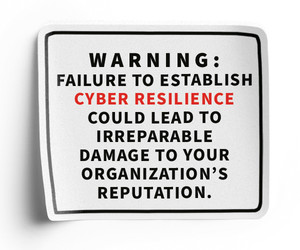Cloud computing offers a pay-as-you-go pricing model, allowing organizations to pay only for the resources they consume and avoid upfront investments in hardware and infrastructure. This cost-efficiency enables organizations to allocate their IT budgets more effectively and invest in other cybersecurity initiatives to enhance their overall cyber resilience.
In addition, cloud-based data processing enables real-time collaboration and agility by providing access to data and applications from anywhere, at any time and on any device. This flexibility allows healthcare organizations to adapt quickly to changing business needs, respond rapidly to cyberthreats, and make informed decisions based on real-time data insights, thereby enhancing their overall cyber resilience posture.
Processing data in the cloud offers numerous advantages for enhancing cyber resilience, including scalability, redundancy, security controls, disaster recovery capabilities, cost efficiency and agility. By leveraging these benefits, organizations can strengthen their defenses against cyberthreats and ensure the continuity and availability of their data processing operations in the face of evolving cybersecurity challenges.
RELATED: CDW ensures cloud migration success in five critical ways.
Tips to Improve Healthcare Organizations’ Cyber Resilience
Healthcare organizations should begin the process of creating a robust cyber resilience strategy by evaluating the organization’s current resiliency and recovery capabilities. IT teams should identify strengths, weaknesses and areas for improvement to inform strategic planning.
However, healthcare organizations shouldn’t approach this process alone. Partnering with trusted experts who can validate and support the organization’s cyber resiliency initiatives is critical. Organizations should seek out vendors or consultants such as CDW with proven experience in cybersecurity, disaster recovery and business continuity planning.
The organization should establish a dedicated governance committee that comprises key stakeholders from across the organization. This committee will drive initiatives, ensure alignment with business objectives and oversee the adoption of cyber resiliency measures.
In addition, integrating a recognized cybersecurity framework such as the NIST Cybersecurity Framework or the Center for Internet Security’s 18 Critical Security Controls into the organization’s planning gives the security team the benefit of comprehensive guidelines and best practices for managing cybersecurity risks effectively.
Healthcare organizations should also develop both short-term and long-term roadmaps for implementing cyber resiliency measures. Include recurring validation activities to assess progress, identify gaps and ensure maximum adoption and operational efficiency over time.
It’s also recommended that organizations prioritize data categorization and application rationalization as part of their backup and recovery strategies. This ensures that critical data and applications are appropriately protected and can be recovered in the event of a cyber incident.
Finally, organizations should ensure they have sufficient personnel with the necessary expertise to deploy and manage new cyber resiliency initiatives. Alternatively, consider leveraging third-party providers for professional or managed services to supplement internal capabilities and resources.
By following these tips, healthcare organizations can strengthen their cyber resiliency posture, mitigate risks and ensure continuity of operations in the face of evolving cyberthreats.
This article is part of HealthTech’s MonITor blog series.
















